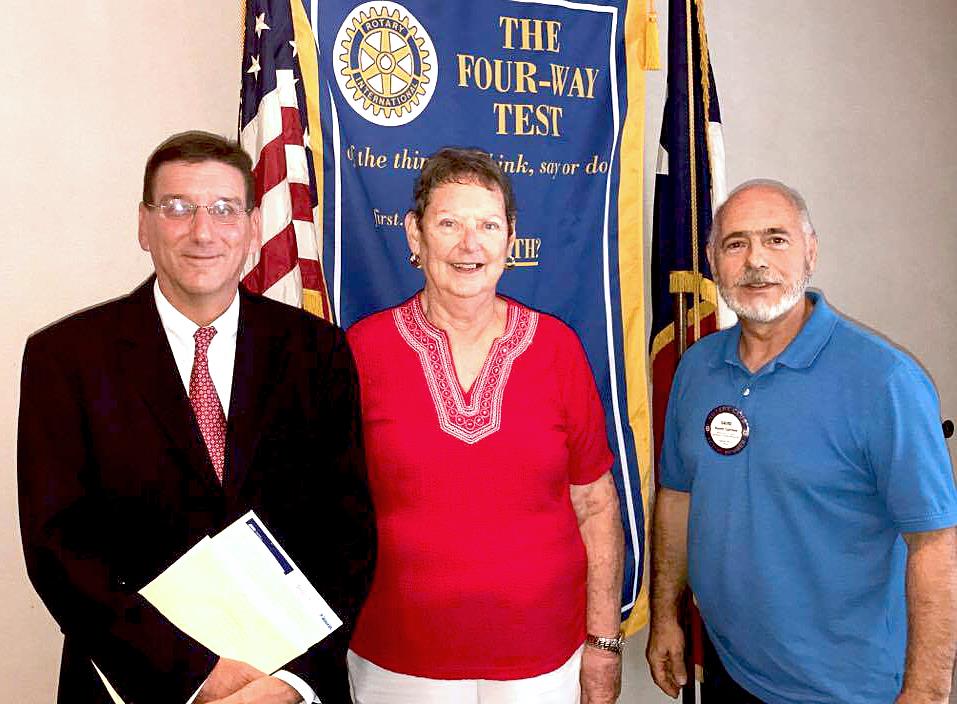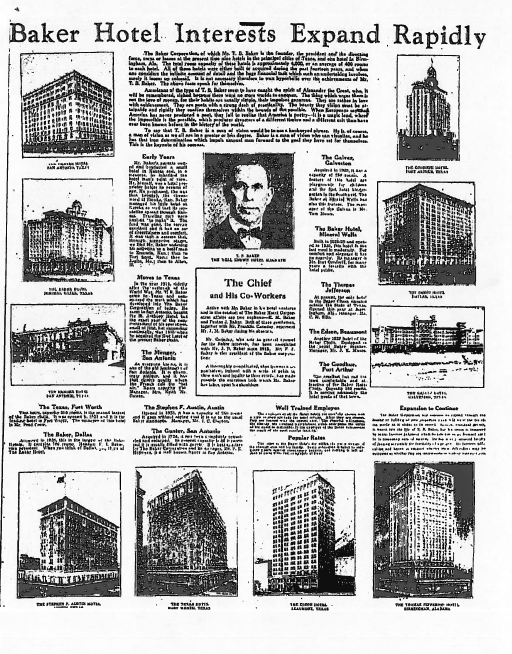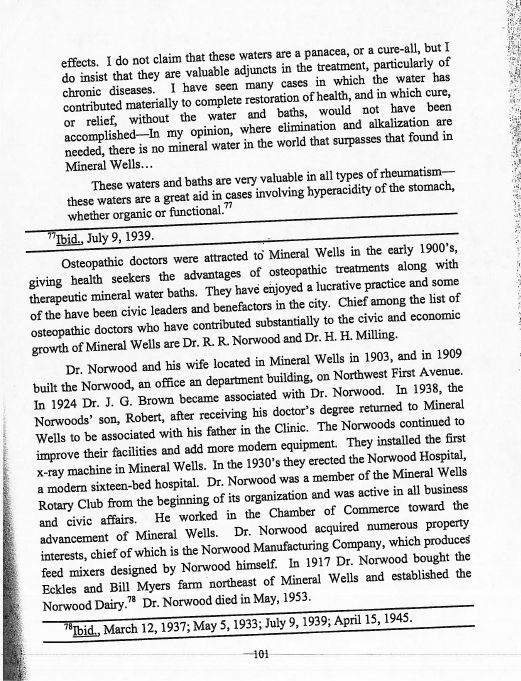
Mineral Wells historian Phil Garrett knows people are prone to have stories and tales, but when it comes to facts there are two kinds of sources – primary and secondary.
Garrett said he likes to go right to the source, or sources, when they are available, and he has when it comes to talk of ghosts and other interesting tales often told about the Baker Hotel and other Mineral Wells locales.
Garrett, a local attorney and Mineral Wells Rotarian, gave an interesting and humorous – one might say "spirited" – program at this week's Rotary Club meeting to try and offer some historical perspective on the topics of haunts and ghosts. He is pictured at left with Pat Talkington, of Mineral Wells Heritage, and Rotary Club President David Cairone.
The Baker Hotel doesn't have a long operating history – just 45 years – and Garrett has spoken with former employees, including two managers who worked for Earl Baker and who possessed good working knowledge of the hotel while it was open.
Garrett said the Baker Hotel didn't actually become haunted until the late Jayne Catrett became a caretaker for the property, back when there were still businesses leasing space on the ground floor, about two decades ago. Catrett would host tours, for a fee, and offered up some stories of ghosts. The more ghosts, the more people wanted to go inside. That took place until the city closed the building to the public in the mid-2000s.

There are three known deaths that happened at the Baker Hotel, Garrett said, and none involve a mistress of Mr. Baker's plunging to her death.
One occurred in 1944 when what Garrett said a federal civil investigator, likely assigned to Camp Wolters, did throw himself out of a window from Room 919. Garrett said the man's death sparked an FBI investigation, but no foul play was found.
The next one occurred Jan. 16, 1948, when some horseplay with a service elevator caused 15-year-old Douglas Moore to be cut in half.
In 1952, a man rented a room, went upstairs and cut his throat.
Garrett dispelled notions of public executions that took place on the street between the hotel and the old post office to the north – which then was Mesquite Street and today is N.E. 1st Avenue. He said a ring on the street that is referred to is likely what remains of a hitching post for horses.
As far as tunnels and what went on in them, there is one known tunnel that goes from the basement of the Baker to the outdoor swimming pool beside the hotel. He said it possibly extended to, or there was a second tunnel, that went further northeast to what today is a parking lot for First United Methodist Church, but back in the day was a water tower. There are no other known tunnels, Garrett said.
Garrett also spoke about the former Norwood Hospital in the 500 block of N.W. 1st Avenue, which is another source of tales.
In fact, the Norwoods brought modern medicine and techniques to Mineral Wells, including installation of the town's first X-ray machine.

Dr. R.R. Norwood and his wife came to Mineral Wells in 1903 and in 1909 built the Norwood. His son, Robert, obtained his doctor's degree and returned to Mineral Wells in 1938 to join his father in the local practice. They continued to expand and modernize their practice. In the 1930s, they built Norwood Hospital, what was then a modern, 16-bed care facility.
Dr. R.R. Norwood was a member of Mineral Wells Rotary Club from its inception, worked in the Mineral Wells Chamber of Commerce and was active in many local business and civic affairs. He acquired other property interests, including Norwood Manufacturing Company, which produced feed mixers designed and sold by Norwood. In 1917 he bought a farm northeast of town, along what is today Ellis White Road, and established Norwood Dairy. He passed away in 1953.
Rotary Club of Mineral Wells meets every Wednesday at noon at Holiday Hills Country Club for lunch, networking and a program of interest. Come join us, and learn more about becoming a Rotarian and our motto, "Service Above Self."